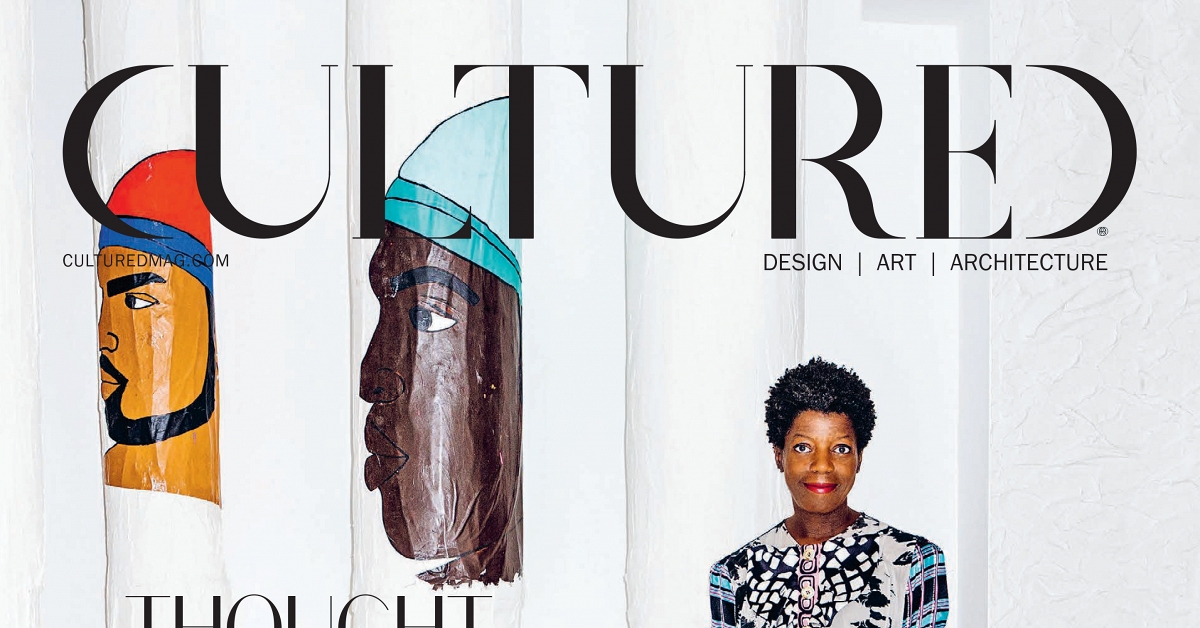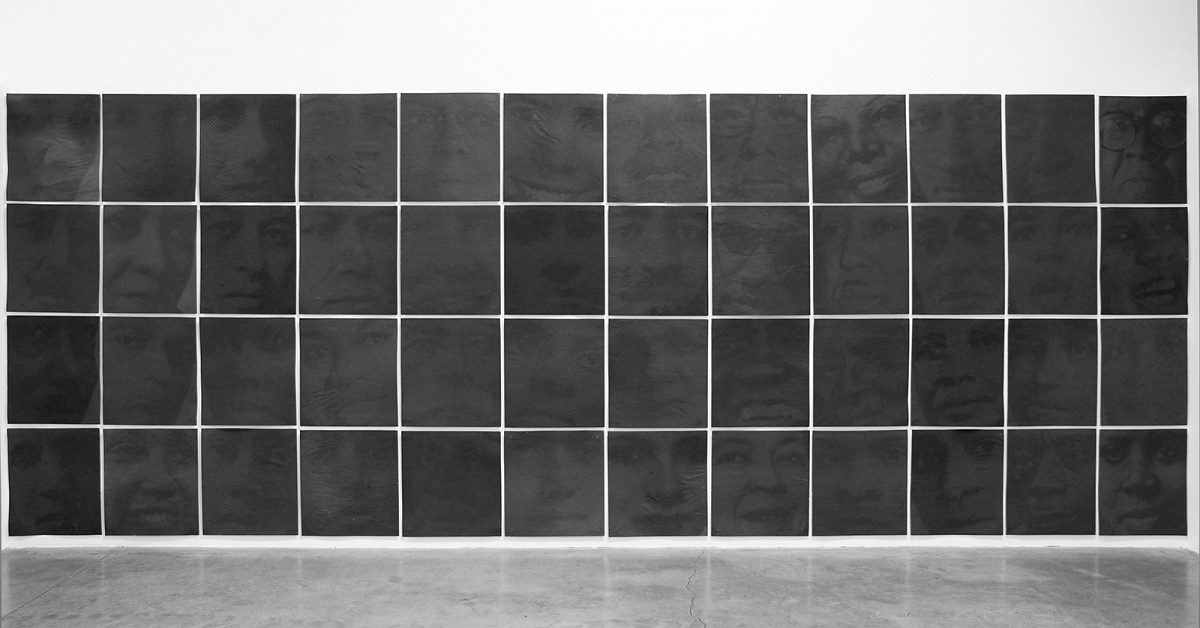Brooklyn Painters
DUEL Magazine / Apr 1, 2019
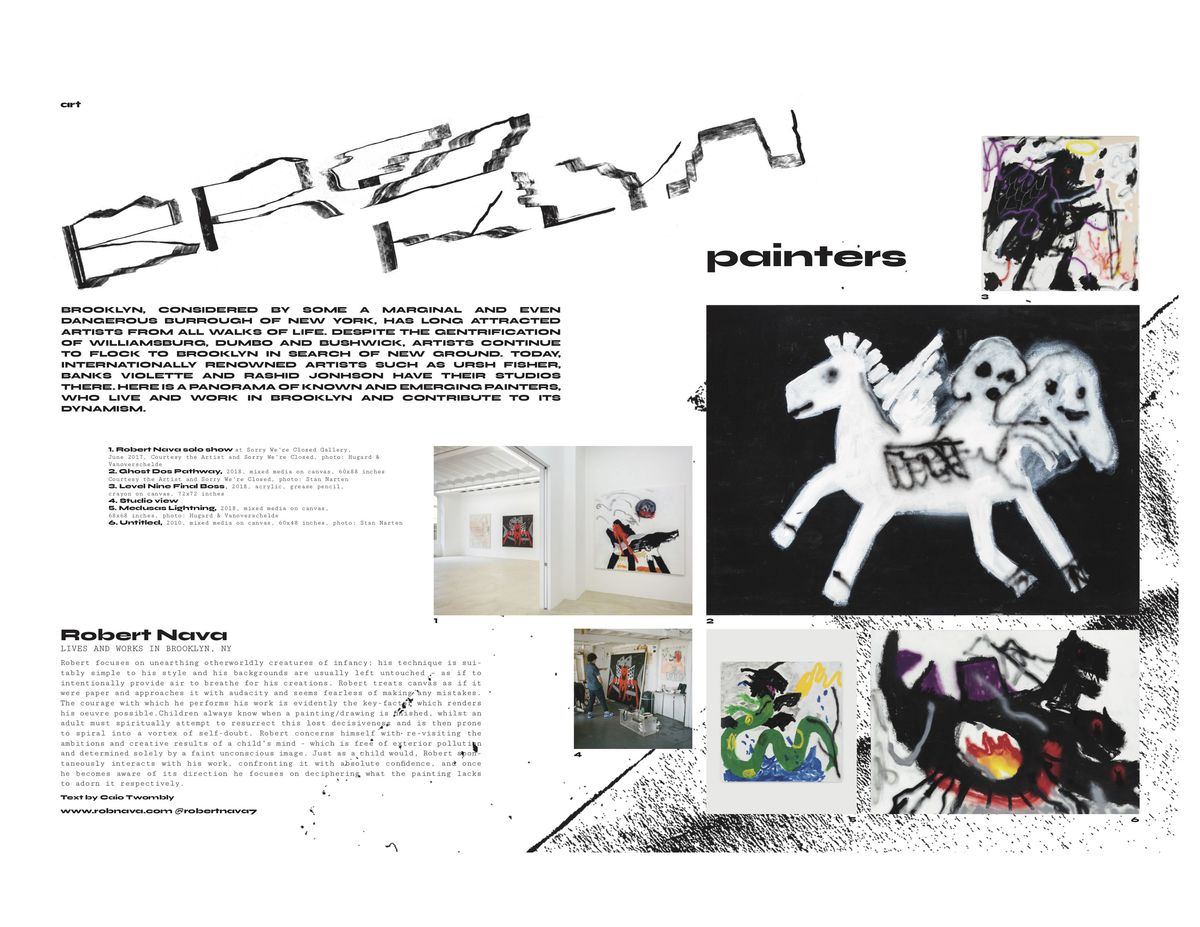
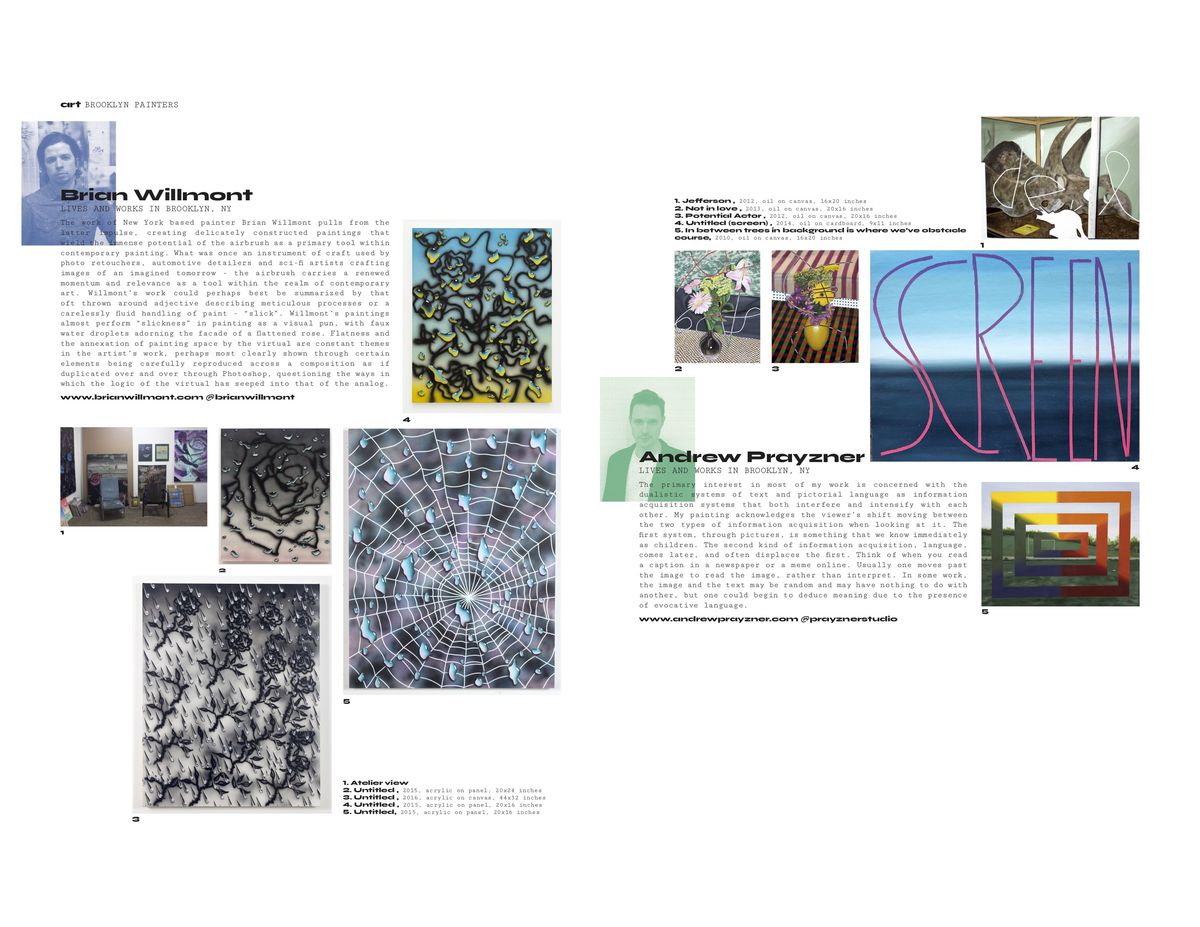
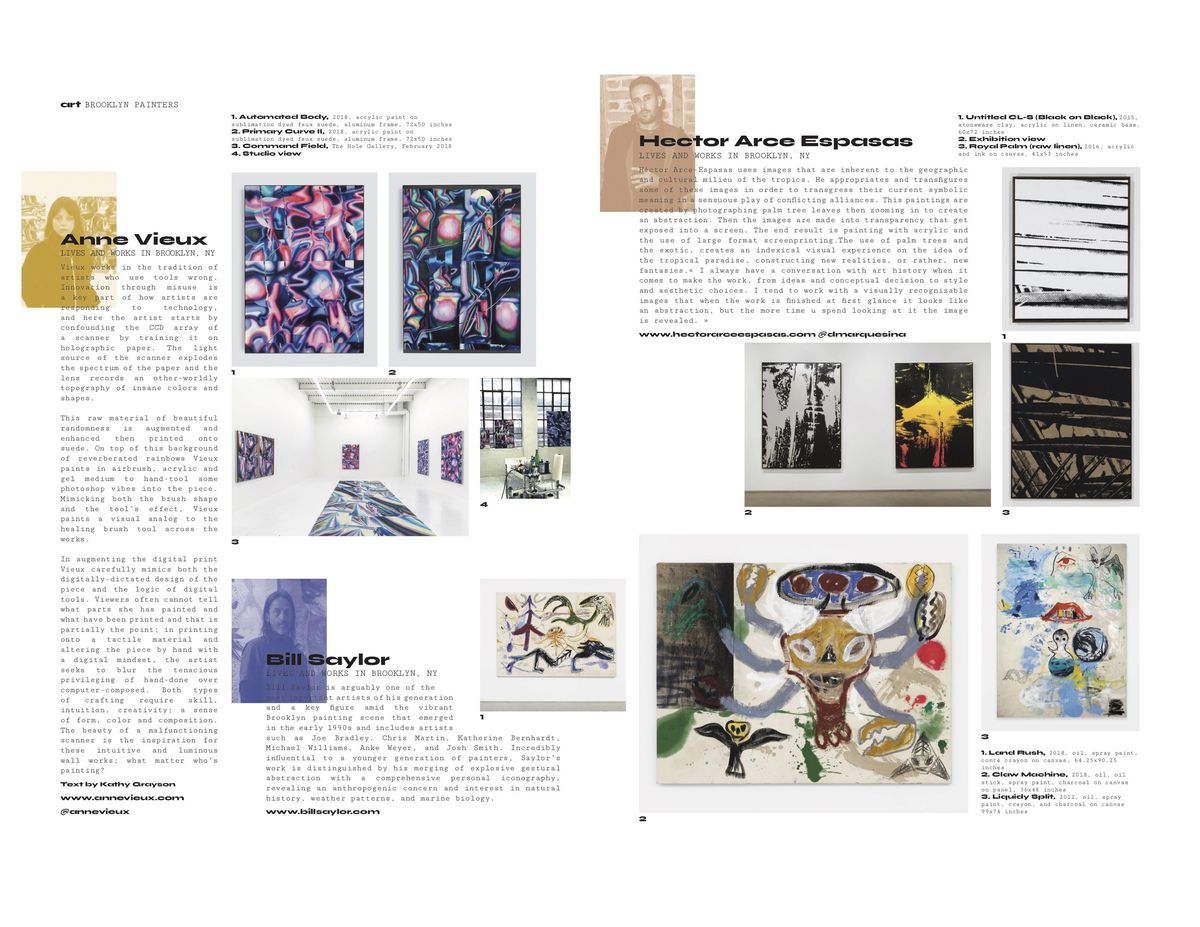
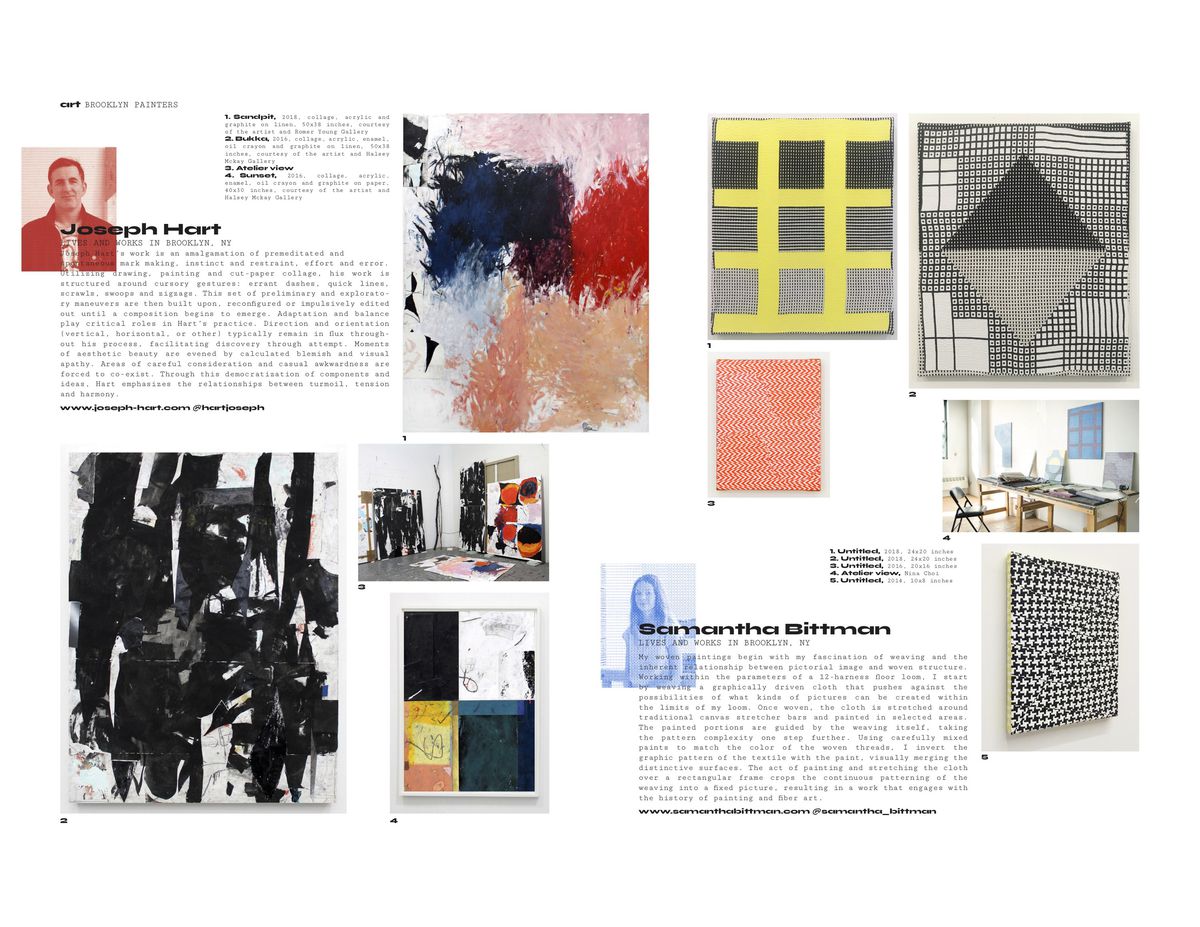
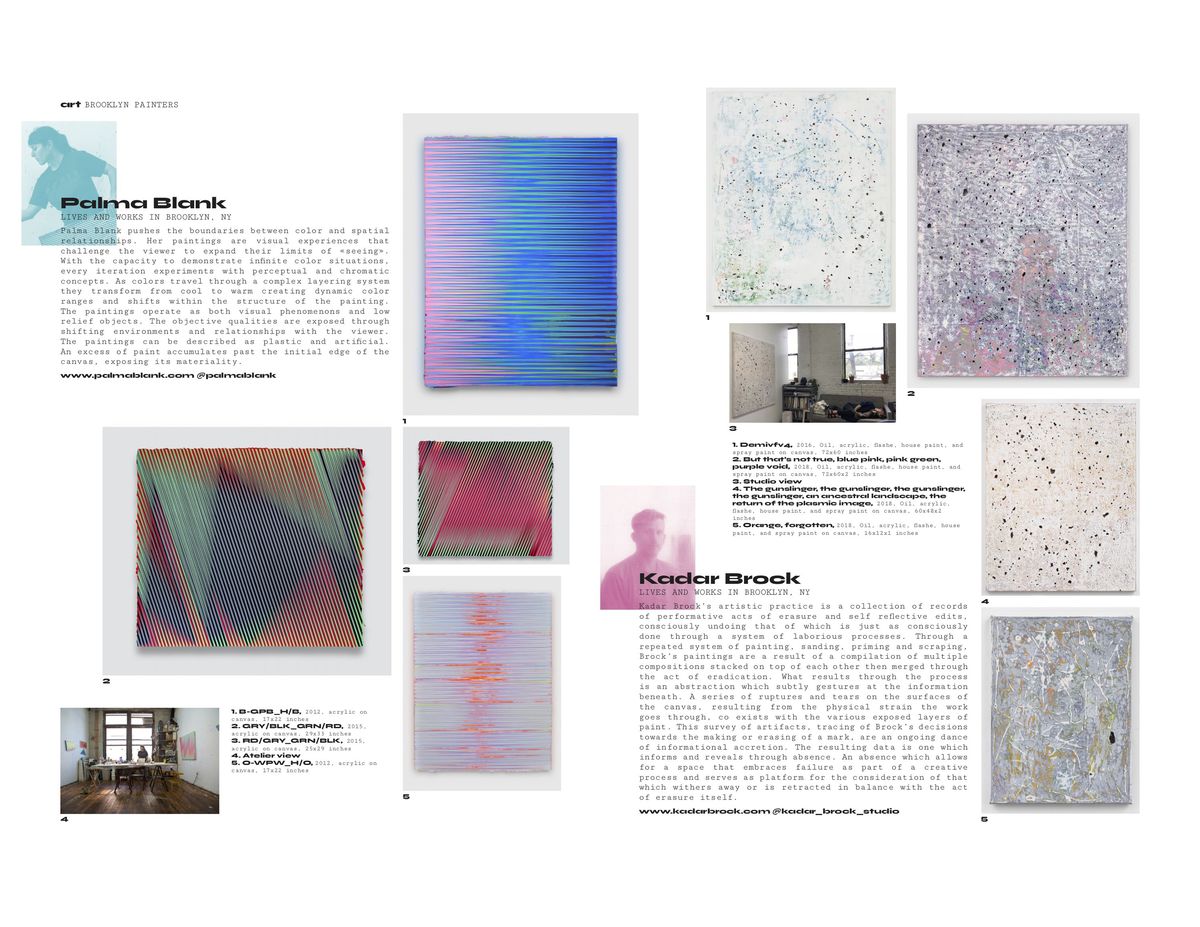
BROOKLYN, CONSIDERED BY SOME A MARGINAL AND EVEN DANGEROUS BURROUGH OF NEW YORK, HAS LONG ATTRACTED ARTISTS FROM ALL WALKS OF LIFE. DESPITE THE GENTRIFICATION OF WILLIAMSBURG, DUMBO AND BUSHWICK, ARTISTS CONTINUE TO FLOCK TO BROOKLYN IN SEARCH OF NEW GROUND. TODAY, INTERNATIONALLY RENOWNED ARTISTS SUCH AS URSH FISHER, BANKS VIOLETTE AND RASHID JONHSON HAVE THEIR STUDIOS THERE. HERE IS A PANORAMA OF KNOWN AND EMERGING PAINTERS, WHO LIVE AND WORK IN BROOKLYN AND CONTRIBUTE TO ITS DYNAMISM
Robert Nava
Lives and works in Brooklyn, NY
Robert focuses on unearthing otherworldly creatures of infancy; his technique is suitably simple to his style and his backgrounds are usually left untouched – as if to intentionally provide air to breathe for his creations. Robert treats canvas as if it were paper and approaches it with audacity and seems fearless of making any mistakes. The courage with which he performs his work is evidently the key-factor which renders his oeuvre possible.Children always know when a painting/drawing is finished, whilst an adult must spiritually attempt to resurrect this lost decisiveness and is then prone to spiral into a vortex of self-doubt. Robert concerns himself with re-visiting the ambitions and creative results of a child’s mind - which is free of exterior pollution and determined solely by a faint unconscious image. Just as a child would, Robert spon- ô°ƒ taneously interacts with his work, confronting it with absolute confidence, and once he becomes aware of its direction he focuses on deciphering what the painting lacks to adorn it respectively. Text by Caio Twombly
Brian Willmont
Lives and works in Brooklyn, NY
The work of New York based painter Brian Willmont pulls from the latter impulse, creating delicately constructed paintings that wield the immense potential of the airbrush as a primary tool within contemporary painting. What was once an instrument of craft used by photo retouchers, automotive detailers and sci-fi artists crafting images of an imagined tomorrow - the airbrush carries a renewed momentum and relevance as a tool within the realm of contemporary art. Willmont’s work could perhaps best be summarized by that oft thrown around adjective describing meticulous processes or a carelessly fluid handling of paint - “slick”. Willmont’s paintings almost perform “slickness” in painting as a visual pun, with faux water droplets adorning the facade of a flattened rose. Flatness and the annexation of painting space by the virtual are constant themes in the artist’s work, perhaps most clearly shown through certain elements being carefully reproduced across a composition as if duplicated over and over through Photoshop, questioning the ways in which the logic of the virtual has seeped into that of the analog.
Andrew Prayzner
Lives and works in Brooklyn, NY
The primary interest in most of my work is concerned with the dualistic systems of text and pictorial language as information acquisition systems that both interfere and intensify with each other. My painting acknowledges the viewer’s shift moving between the two types of information acquisition when looking at it. The first system, through pictures, is something that we know immediately as children. The second kind of information acquisition, language, comes later, and often displaces the first. Think of when you read a caption in a newspaper or a meme online. Usually one moves past the image to read the image, rather than interpret. In some work, the image and the text may be random and may have nothing to do with another, but one could begin to deduce meaning due to the presence of evocative language.
Anne Vieux
Lives and works in Brooklyn, NY
Vieux works in the tradition of artists who use tools wrong. Innovation through misuse is a key part of how artists are responding to technology, and here the artist starts by confounding the CCD array of a scanner by training it on holographic paper. The light source of the scanner explodes the spectrum of the paper and the ô°€ô° lens records an otherworldly topography of insane colors and shapes. This raw material of beautiful randomness is augmented and enhanced then printed onto suede. On top of this background of reverberated rainbows Vieux paints in airbrush, acrylic and gel medium to hand-tool some photoshop vibes into the piece. Mimicking both the brush shape and the tool’s effect, Vieux paints a visual analog to the healing brush tool across the works. In augmenting the digital print Vieux carefully mimics both the digitally-dictated design of the piece and the logic of digital tools. Viewers often cannot tell what parts she has painted and what have been printed and that is partially the point; in printing onto a tactile material and altering the piece by hand with a digital mindset, the artist seeks to blur the tenacious privileging of hand-done over computer-composed. Both types of crafting require skill, intuition, creativity; a sense of form, color and composition. The beauty of a malfunctioning scanner is the inspiration for these intuitive and luminous wall works; what matter who’s painting? Text by Kathy Graysob
Hector Arce Espasas
Lives and works in Brooklyn, NY
Héctor Arce-Espasas uses images that are inherent to the geographic and cultural milieu of the tropics. He appropriates and transfigures some of these images in order to transgress their current symbolic meaning in a sensuous play of conflicting alliances. This paintings are created by photographing palm tree leaves then zooming in to create an abstraction. Then the images are made into transparency that get exposed into a screen. The end result is painting with acrylic and the use of large format screenprinting.The use of palm trees and the exotic, creates an indexical visual experience on the idea of the tropical paradise, constructing new realities, or rather, new fantasies.« I always have a conversation with art history when it comes to make the work, from ideas and conceptual decision to style and aesthetic choices. I tend to work with a visually recognizable images that when the work is finished at first glance it looks like an abstraction, but the more time u spend looking at it the image is revealed. »
Bill Saylor
Lives and works in Brooklyn, NY
Bill Saylor is arguably one of the most important artists of his generation and a key figure amid the vibrant Brooklyn painting scene that emerged ô°€in the early 1990s and includes artists such as Joe Bradley, Chris Martin, Katherine Bernhardt, Michael Williams, Anke Weyer, and Josh Smith. Incredibly influential to a younger generation of painters, Saylor’s work is distinguished by his merging of explosive gestural abstraction with a comprehensive personal iconography, revealing an anthropogenic concern and interest in natural history, weather patterns, and marine biology.
Joseph Hart
Lives and works in Brooklyn, NY
”¨Joseph Hart’s work is an amalgamation of premeditated and spontaneous mark making, instinct and restraint, effort and error. Utilizing drawing, painting and cut-paper collage, his work is structured around cursory gestures: errant dashes, quick lines, scrawls, swoops and zigzags. This set of preliminary and explorato- ry maneuvers are then built upon, reconfigured or impulsively edited out until a composition begins to emerge. Adaptation and balance play critical roles in Hart’s practice. Direction and orientation (vertical, horizontal, or other) typically remain in flux through- out his process, facilitating discovery through attempt. Moments of aesthetic beauty are evened by calculated blemish and visual apathy. Areas of careful consideration and casual awkwardness are forced to co-exist. Through this democratization of components and ideas, Hart emphasizes the relationships between turmoil, tension and harmony
Samantha Bittman
Lives and works in Brooklyn, NY
My woven paintings begin with my fascination of weaving and the inherent relationship between pictorial image and woven structure. Working within the parameters of a 12-harness floor loom, I start by weaving a graphically driven cloth that pushes against the possibilities of what kinds of pictures can be created within the limits of my loom. Once woven, the cloth is stretched around traditional canvas stretcher bars and painted in selected areas. The painted portions are guided by the weaving itself, taking the pattern complexity one step further. Using carefully mixed paints to match the color of the woven threads, I invert the graphic pattern of the textile with the paint, visually merging the ô°„ distinctive surfaces. The act of painting and stretching the cloth over a rectangular frame crops the continuous patterning of the weaving into a fixed picture, resulting in a work that engages with the history of painting and fiber art.
Palma Blank
Lives and works in Brooklyn, NY
Palma Blank pushes the boundaries between color and spatial relationships. Her paintings are visual experiences that challenge the viewer to expand their limits of «seeing». With the capacity to demonstrate infinite color situations, every iteration experiments with perceptual and chromatic concepts. As colors travel through a complex layering system they transform from cool to warm creating dynamic color ranges and shifts within the structure of the painting. The paintings operate as both visual phenomenons and low relief objects. The objective qualities are exposed through shifting environments and relationships with the viewer. The paintings can be described as plastic and artificial. An excess of paint accumulates past the initial edge of the canvas, exposing its materiality.
Kadar Brock
Lives and works in Brooklyn, NY
Kadar Brock’s artistic practice is a collection of records ô°ƒ of performative acts of erasure and self reflective edits, consciously undoing that of which is just as consciously done through a system of laborious processes. Through a repeated system of painting, sanding, priming and scraping, Brock’s paintings are a result of a compilation of multiple compositions stacked on top of each other then merged through the act of eradication. What results through the process is an abstraction which subtly gestures at the information beneath. A series of ruptures and tears on the surfaces of the canvas, resulting from the physical strain the work goes through, co exists with the various exposed layers of paint. This survey of artifacts, tracing of Brock’s decisions towards the making or erasing of a mark, are an ongoing dance of informational accretion. The resulting data is one which informs and reveals through absence. An absence which allows for a space that embraces failure as part of a creative process and serves as platform for the consideration of that which withers away or is retracted in balance with the act of erasure itself.



